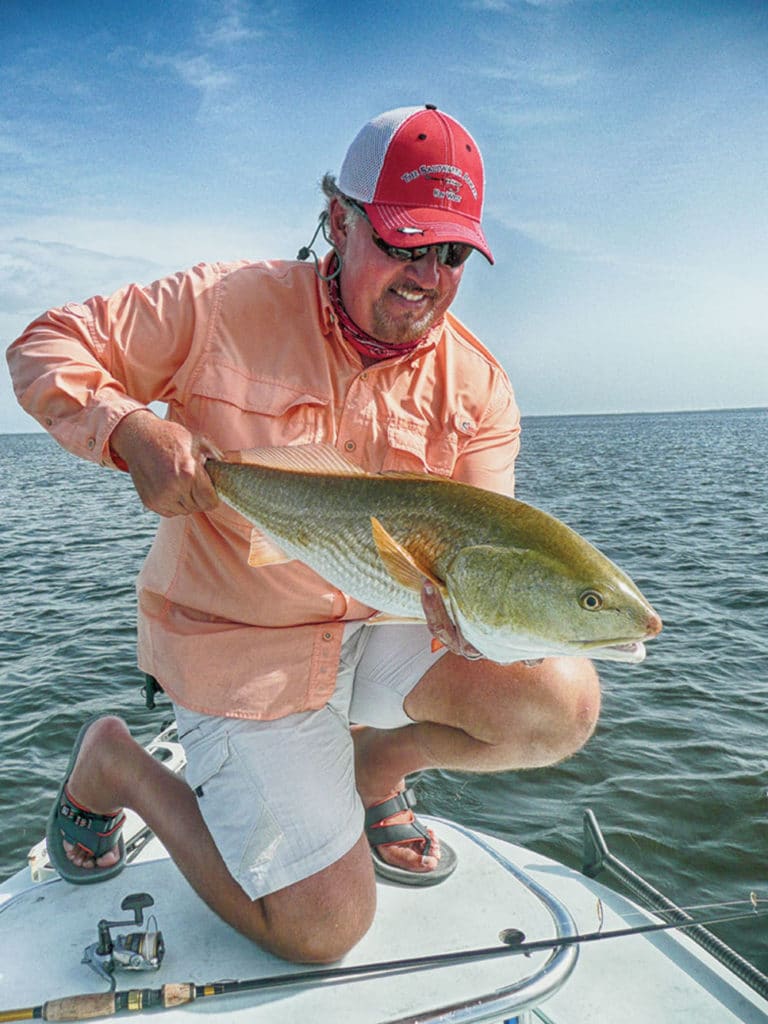
COMBO STRATEGY
One of the best tactics to discover potential structures is to head out at low tide, when you’ll have a better view of the bottom landscape in an area. Full and new moon low tides are best, and it’s wise to time trips near the very bottom of falling water, so as not to get caught high and dry. Look for almost any bottom conformation that’s different. Oyster or clam-bar humps or high spots are good, especially in areas where several such humps sit alongside deeper cuts where water flows between them.
In addition to mentally mapping bottom structure, anglers also should note how current and tide flows through such areas, as well as their effect on bait. Any projections of “fingers,” bars or cuts through sand or mud bottoms can funnel water flow and bait, and that makes for prime ambush spots for feeding fish. Watch how the current pushes into sandbars and drop-offs. Note old docks and pilings, sunken trees, boulders, rubble and jetties.
Low-tide scouting trips are wise investments in time for future fishing, but be sure to record the location of structures you discover at low tide, so that when water floods, you can still fish those areas effectively. GPS coordinates of such places are invaluable, and video recordings (even from a cellphone) are extremely helpful.
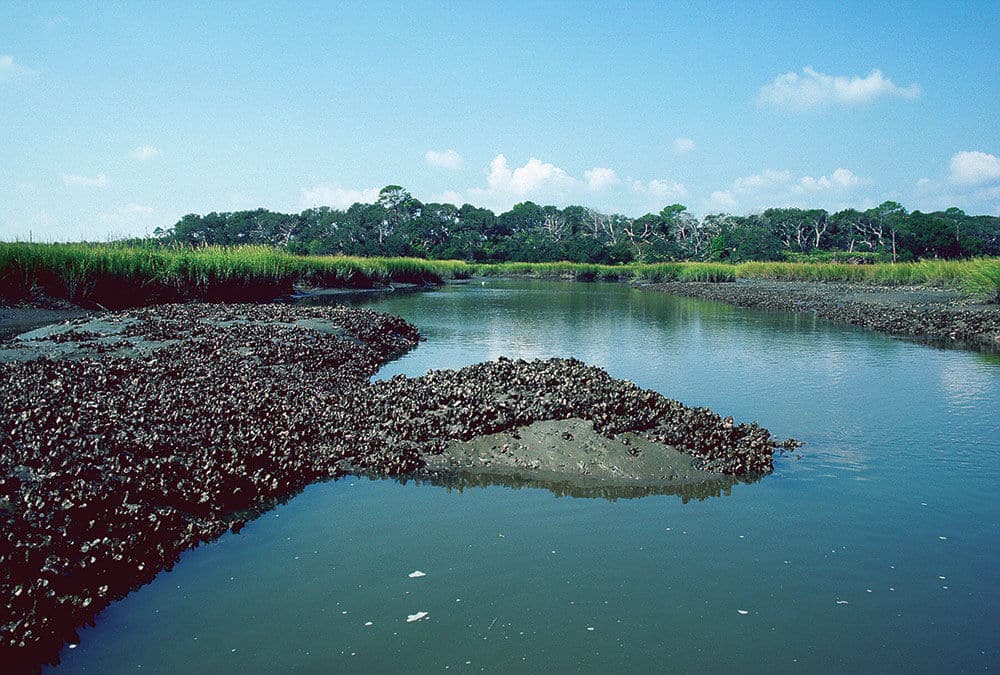
LOW-TIDE SCOUTING
You can easily spot and mentally dissect oyster bars, rocks, trees and other structures — many of which harbor entire food chains, including baitfish and crustaceans and a variety of game fish that prey on them — at low tide. Low-tide scouting trips are wise investments in time for future fishing, but be sure to record the location of structures you discover at low tide, so that when water floods, you can still fish those areas effectively. GPS coordinates of such places are invaluable, and video recordings (even from a cellphone) are extremely helpful.
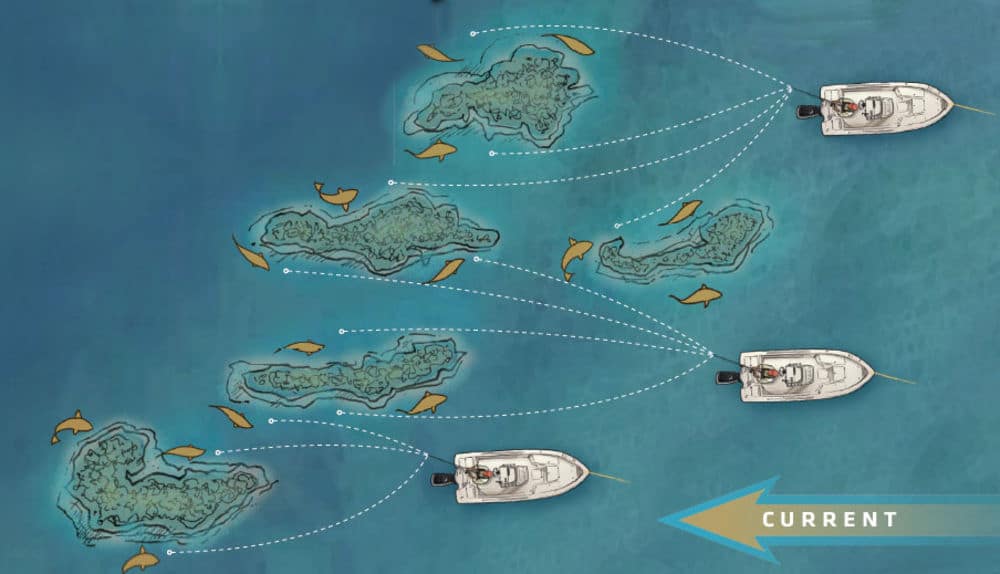
IMPORTANT FACTORS
To fish inshore structures successfully, a good understanding of many factors is required, including the target species, tide phase, current speed, water depth and clarity, and whether the bottom is clean or full of snags and debris.
Baits can be fished “naked” sometimes, but often sinkers are required to get them down to where fish are holding. And there are times when floats or popping corks must be used to keep baits moving naturally with the current, avoiding potential snags.
During falling tides, boats may need to be repositioned to the down-current side of submerged structures to prevent running over fish and getting stuck as the water level drops. Baits or lures can still be worked effectively around the structure, but longer casts could be required.
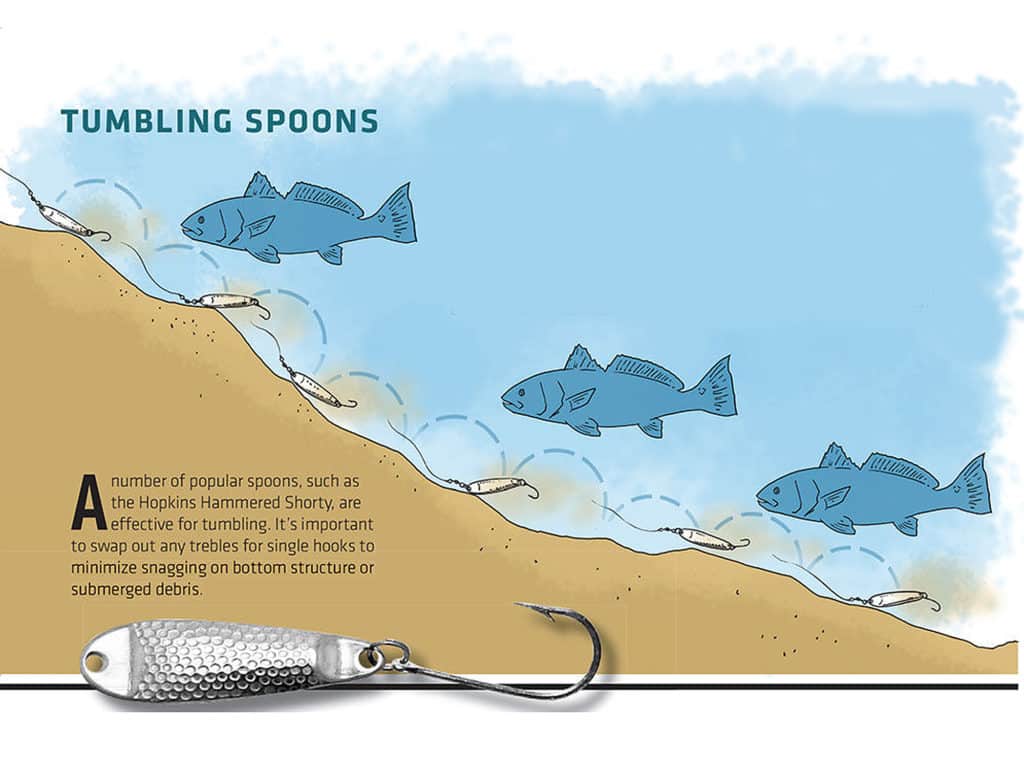
TUMBLING SPOONS
Tumbling a spoon along the bottom in the current is a dynamite technique for working sand, fine gravel or clay bars in 6 to 20 feet of water. Silver spoons – ¼- to 2-ounce, depending on water depth and current flow — are ideal for the task, but a single hook is preferred over a treble to limit bottom fouling. The venerable Hopkins Shorty spoon is a great example.
Cast the spoon up and across the current, allowing it to tumble along the bottom, keeping a high rod angle and the line taut. The correct spoon weight is important because the lure must roll along the bottom to mimic a live baitfish. And use braided line. Its low stretch and small diameter make it easier to detect the slightest strike and help set the hook instantly.
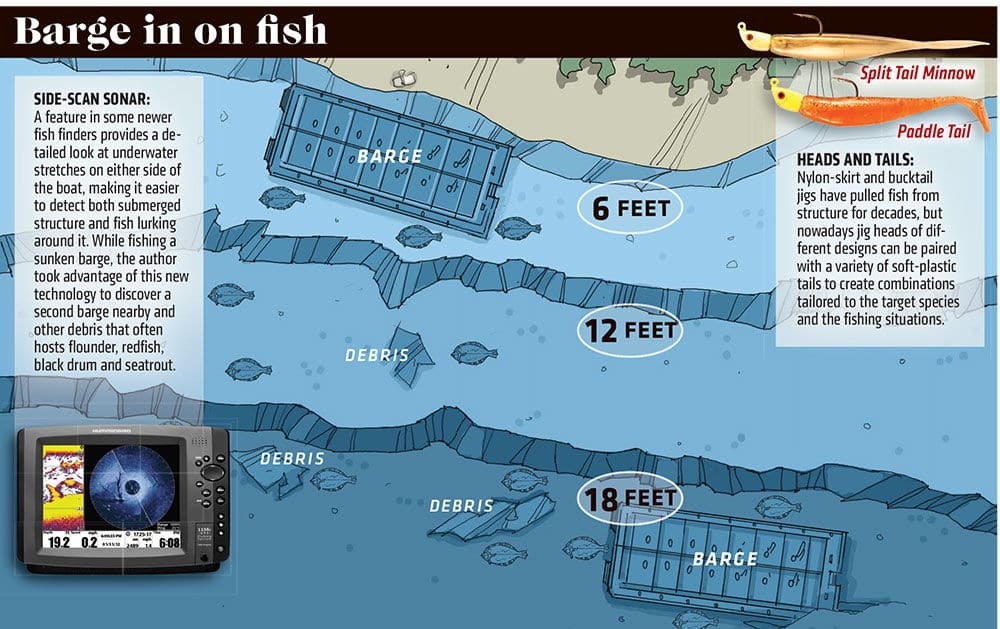
ELECTRONIC AID
Such video recordings make a valuable log entry when uploaded to a home computer, where time of day, season, tide and moon phase, weather and water temperature can be noted, too. Technology is a wonderful thing, even for old salts who thought they knew something about locating and fishing inshore structures. One of the best inshore fishing lessons I’ve received recently came from a buddy who’s a great freshwater panfisherman. T. C. Loyd excels at using sensitive Lowrance side-imaging sonar to pinpoint spawning beds. “In about 5 feet of water, I use side-scan sonar to reveal bream beds far to the sides of my boat,” he said. “Here, let me show you.”
With that, he turned on the Lowrance unit and dialed up a few spots that he’d kept for reference on the machine. The images were incredible; beds by the hundreds in very shallow water clearly showed up. “I can find panfish beds with my electronics in the shallowest water several hundred feet to the sides of my boat,” he explained. “Not many other anglers can locate them because the¬water’s dark and skinny, so standard top-to-bottom Fathometers are useless.”
I knew right then how important side-imaging sonar would be for marine inshore fishing. If such sonar was sensitive enough to clearly show small panfish depressions 300 feet from a boat, it was bound to be astounding what it would reveal in salt water around oyster-shell bars, flats drop-offs, sandbars, bridge pilings, docks, underwater humps and points, rocky areas and riprap.
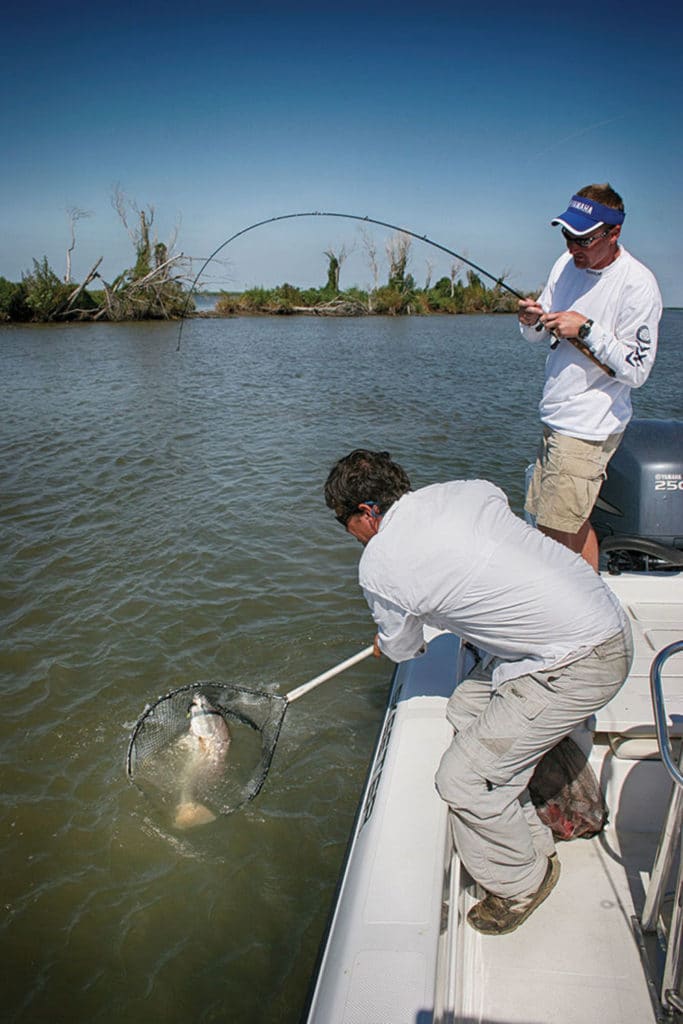
HIDDEN TREASURE
A stretch of water that appears unremarkable at high tide could be hiding prime fish-producing bottom features detectable only with the help of electronics.
Side-scan sonar, a fairly new feature available in some fish finders, provides a detailed look at underwater stretches on either side of the boat, making it easier to pinpoint both submerged structure and fish lurking around it.
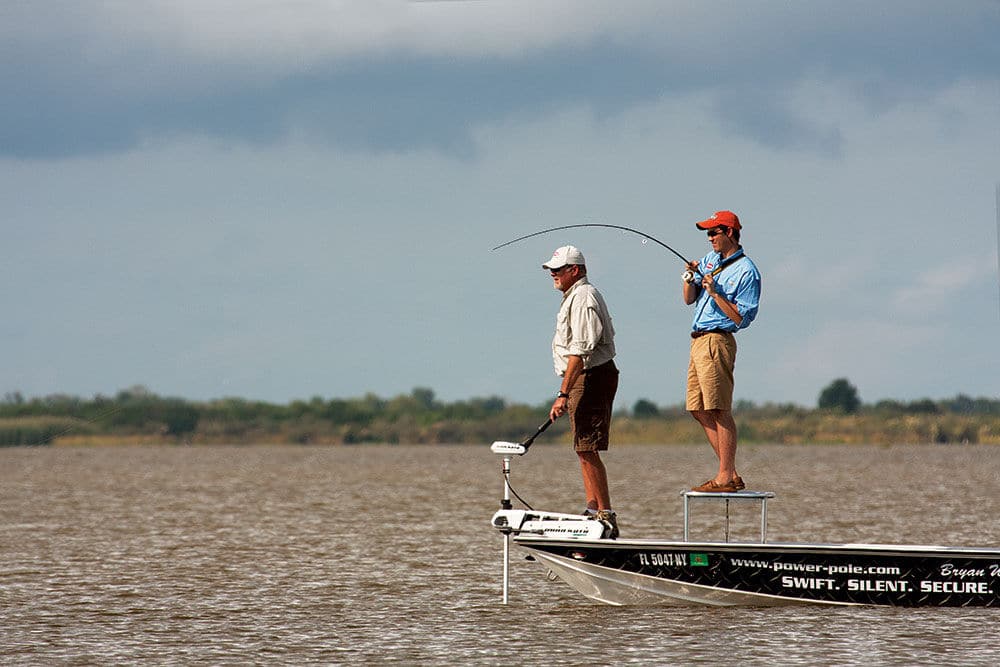
FRESH LOOK
The use of such electronics in deep offshore water has been well documented for years, but I’d never tried such sophisticated sonar in dark, shallow, inshore water (under 20 feet) until recently. It has been eye-opening, to say the least, because the newest side-scan sonar has such remarkably detailed definition that even quite small structural features and baitfish show up clearly.
Just this past fall, I located underwater structure holding redfish and flounder that I’d never suspected. And this is in my home waters I know so well and where I consistently catch fish. On several occasions, side-imaging sonar pinpointed small pods of redfish positioned near river-bottom humps or trout around bridge abutments. Once I found the fish, it was pretty simple to position the boat to make an effective cast with bait or a lure.
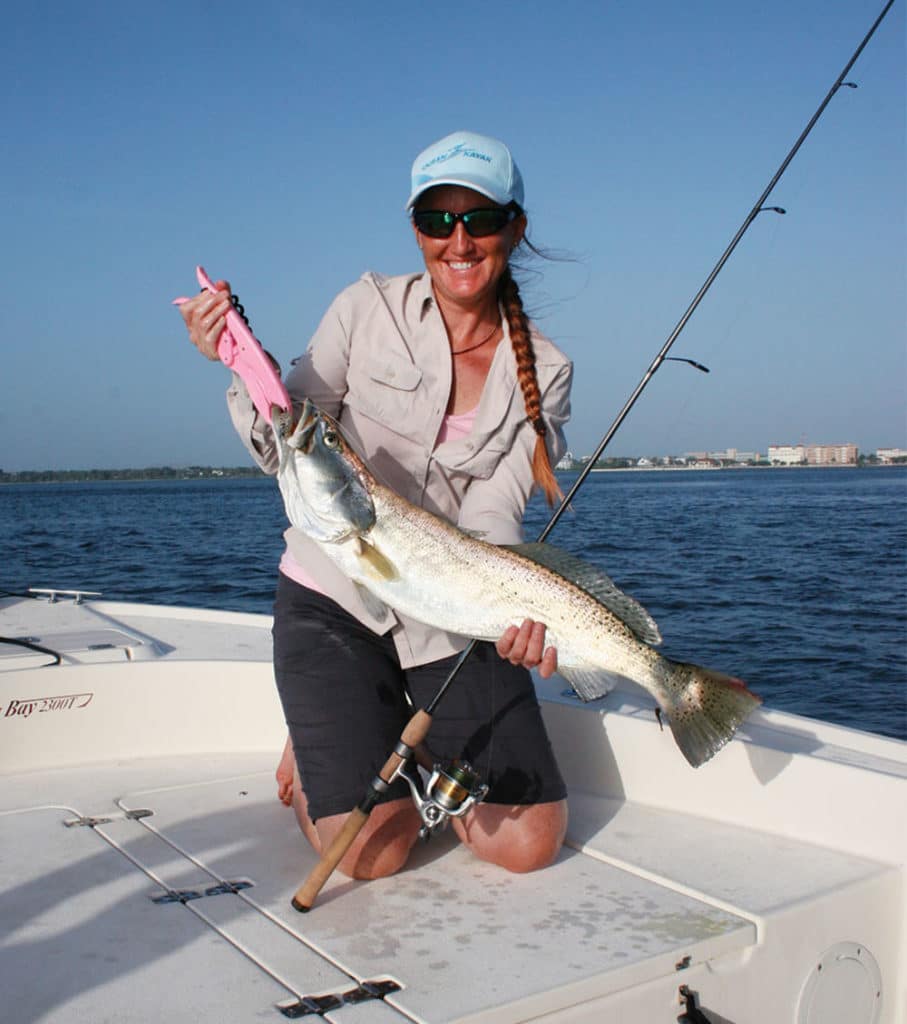
CASTING CALL
Flounder, seatrout, redfish, black drum, snapper, sheepshead and several other species forage around oyster bars, sandbars, bridge and dock pilings, rocks and sunken debris. Above, learning the whereabouts of structures and the depths around their contours helps the angler determine where the fish are most likely to hold at different tidal stages.
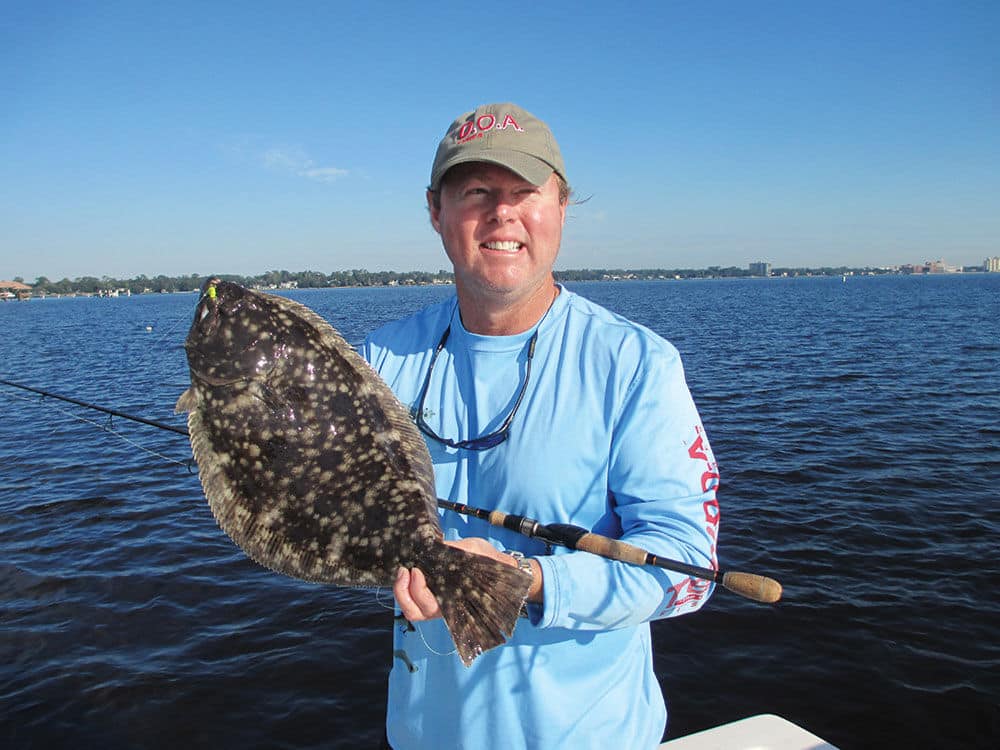
DIG DEEP
Fishing for sheepshead one day, we were using side-scan sonar near an inlet and located big, isolated boulders that had rolled well away from the visible jetties. Some of the boulders were the size of a large chair, resting in 20 feet of water, 30 yards from where they should have been. Every such isolated deep boulder was covered with big sheepshead that eagerly took fiddler crab baits. The fish were aggressive and unpressured because no other anglers had yet discovered the structure and those fish.
Last summer, I learned that an old barge where I commonly caught flounder had a deep side that drops from 6 to 18 feet. When the tide ebbs, that ledge holds huge flounder, with 5-pounders not unusual. I didn’t know the ledge was there, however, until friends and I hooked a big fish near the place, and I swung the boat around and away from the barge to keep that flounder out of snags. In doing so, I noticed the Fathometer, which quickly fell from 6 to 18 feet. The spot is not shown on any chart or GPS-mapping unit that I’ve seen, and it is a sure place for flatfish. Since learning about the ledge where that barge rests, I’ve checked the area with side-imaging sonar and have discovered another deep-¬water barge near the first barge and several large parts of old barges nearby. All hold flounder, redfish, black drum, seatrout and sheepshead.
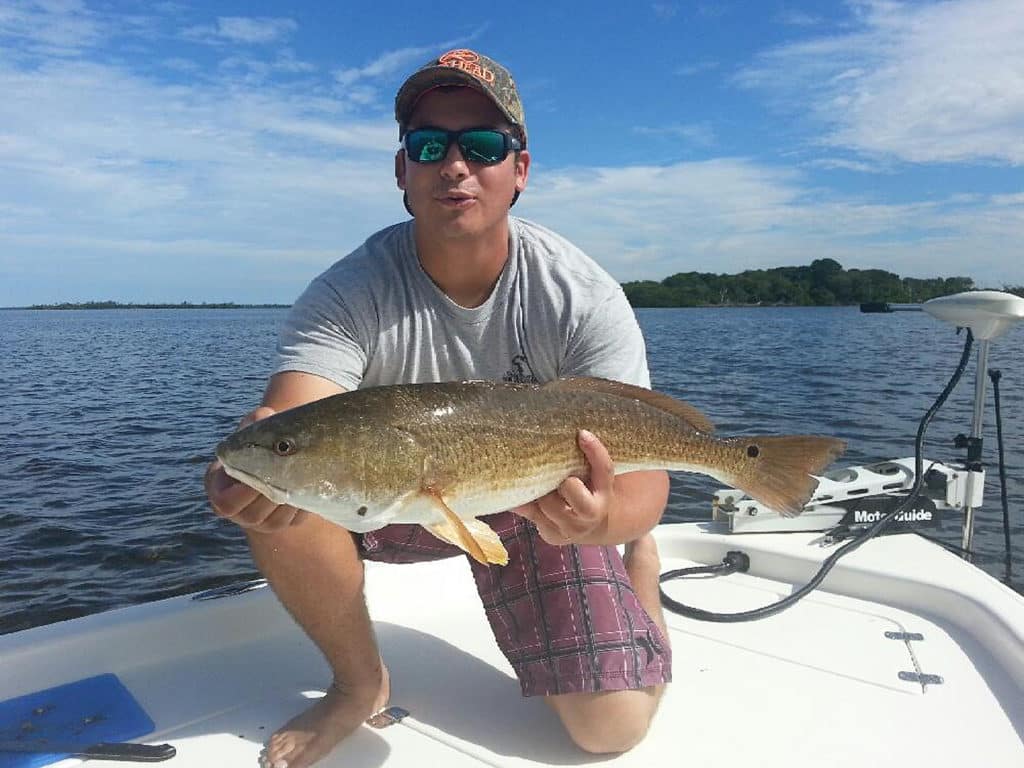
Humminbird has an innovative 360-degree-scanning sonar unit that pinpoints shallow structure and fish up to 300 feet from a boat. Its effectiveness in revealing the best fish-holding inshore spots is remarkable. The value of such sophisticated sonar underscores the importance of understanding inshore structure to consistently catch fish. And it’s important for just about everything from seatrout and redfish, to striped bass, fluke, snook, and most other¬species, too.
Underwater humps that are not shown on any map or GPS chart reveal themselves to electronic imaging, as do shell-bar tips close to deepwater ledges, and cuts and gouges formed by strong tides and currents. Even fish and bait schools hovering around shallow dock pilings and old sunken debris can be found this way. Adding high-tech side-scan sonar to your low-water reconnaissance provides a fast track to learning the hidden details that make your inshore fishing more effective.
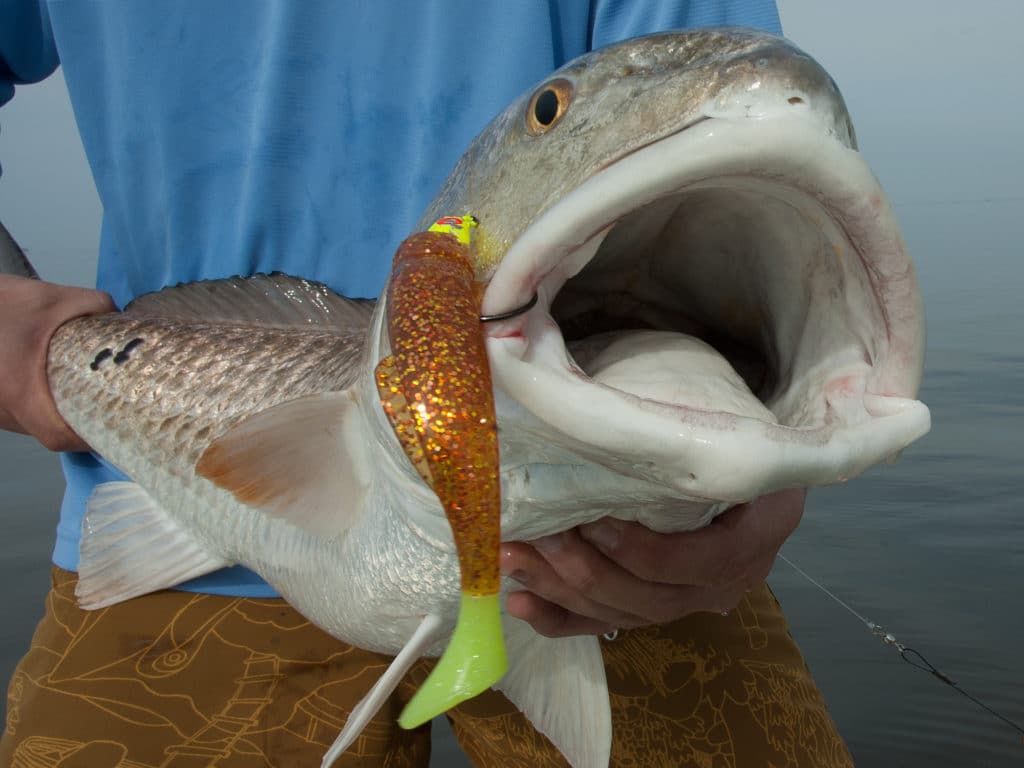
HEADY SELECTIONS
Lead-head jigs are among the best lures for fishing inshore structures, and the right shape and weight configuration can be crucial. Use the lightest jig possible, a good rule of thumb is the cooler the water, the lighter the jig. Inshore, ¼-ounce jigs are standard, 1/8-ounce models are best for cold and very shallow water, and 3/8- to 1-ounce lures most effective in deeper, water or in strong current. Soft-plastic, nylon and bucktail jigs all have applications in various situations.
Different jig head designs are better suited for working different structures correctly. Ball, round or coffee-bean heads are versatile, all-around jig heads that cast well, sink fast and are reasonably snag-resistant, so they’re great choices when snappy retrieves are in order.
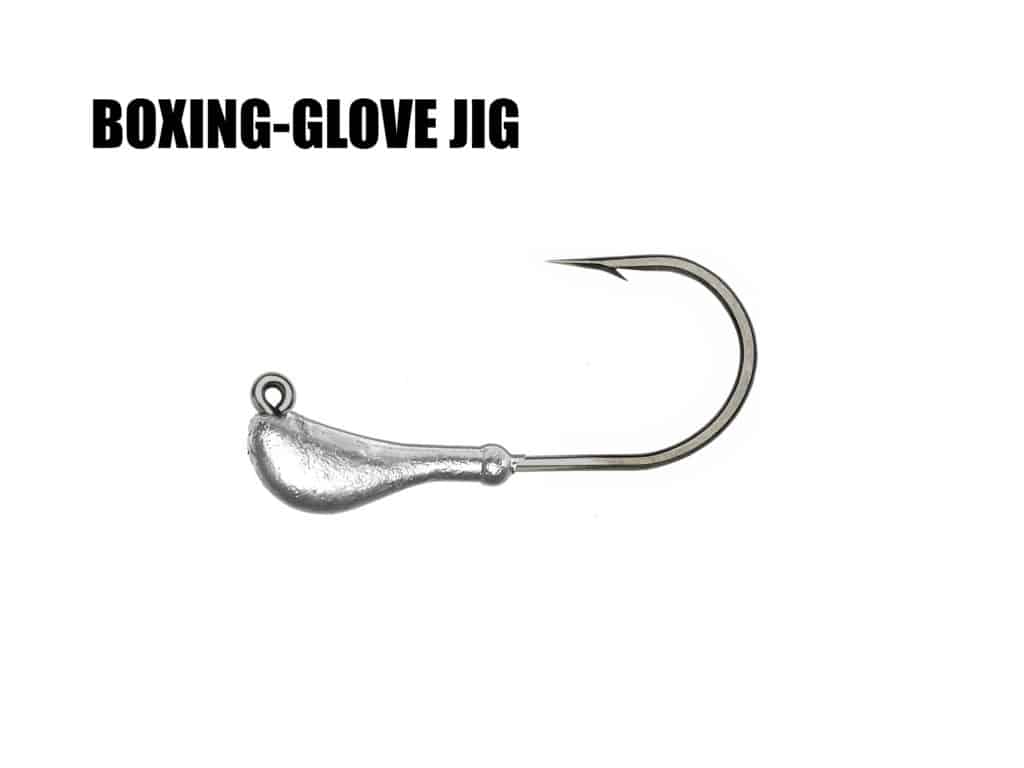
BOXING-GLOVE JIGS
Boxing-glove heads excel when fishing slowly along bottom strewn with shell and small rocks. The rounded, upturned head and hook eye help minimize snags.
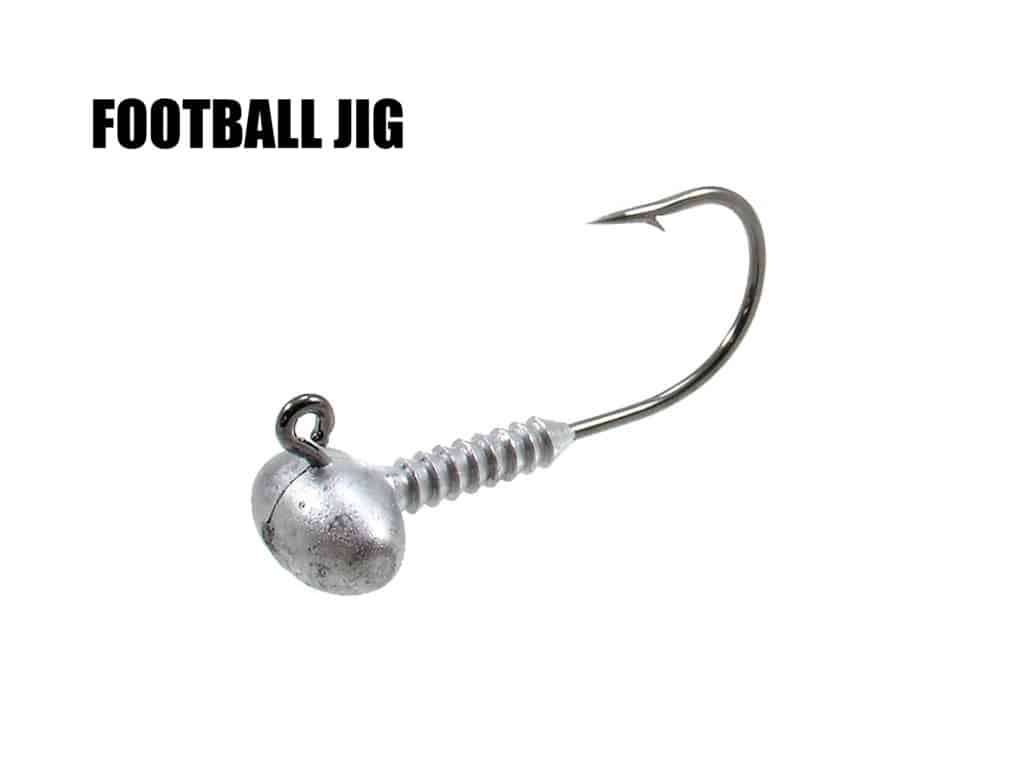
FOOTBALL JIGS
Football jigs are also pretty snag-resistent and work well on rubble bottoms. Many have nylon weed guards (easily trimmed if unwanted), as well as sturdy, wide-gap hooks for saltwater fish.
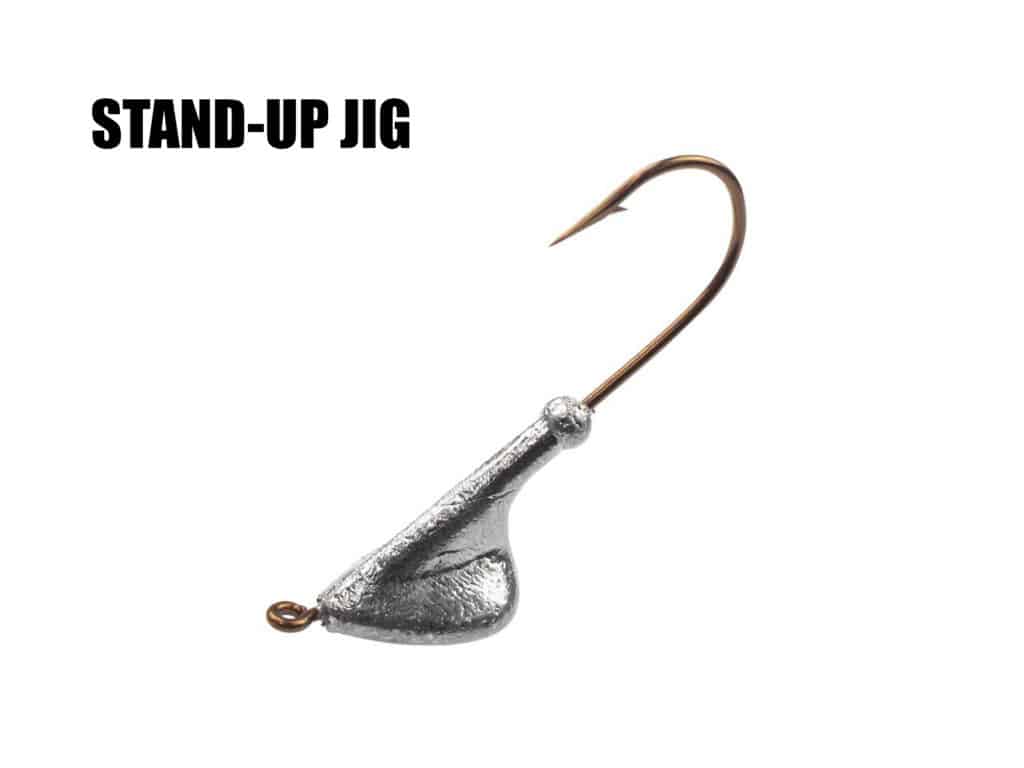
STAND-UP JIGS
Stand-up jig heads are ideal for a slow presentation along the bottom, especially when tipped with natural baits, like shrimp, crab or mullet. The jig head rests on the bottom with the hook up, making it a sure-hooker of bottom feeders, like flounder, redfish and black drum. While this lead-head is not as weedless as other styles, its sharp angles and edges make for excellent feel when searching for shell, rock and rubble-bottom areas. Beefier stand-up jigs for salt water are sold by Bomber and a few others.
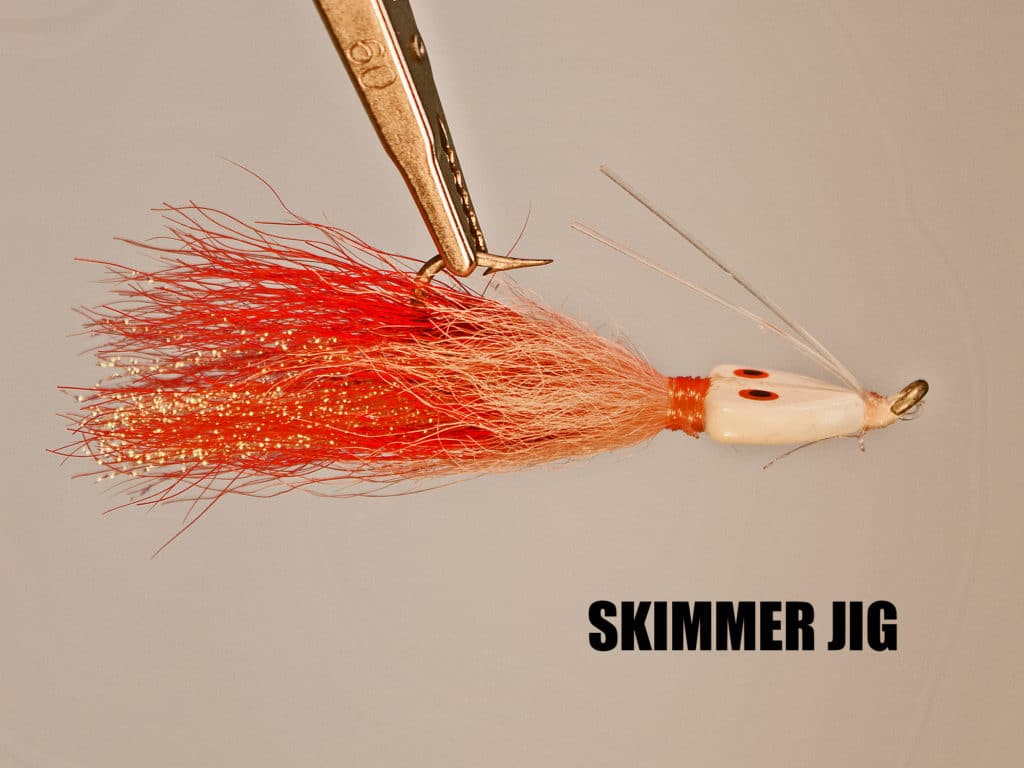
SKIMMER JIGS
Skimmer jigs are tops on shallow areas with minimal current and clean bottom, free of snags. This style is a happy marriage between a boxing-glove and a stand-up jig, featuring the best qualities of both. Their slower sink rate is beneficial in many situations.
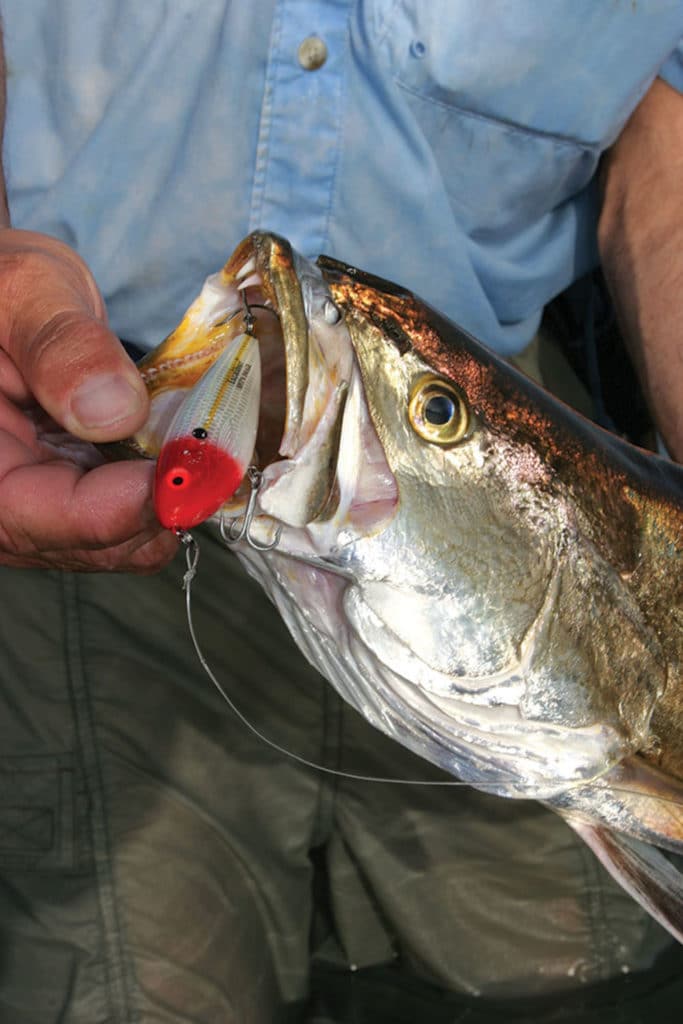
HARD CHOICES
In additional to spoons and jigs, a number of hard baits, from walk-the-dog topwaters to lipless rattlers, have also proven their effectiveness when fishing around structure, especially where baitfish are present.









